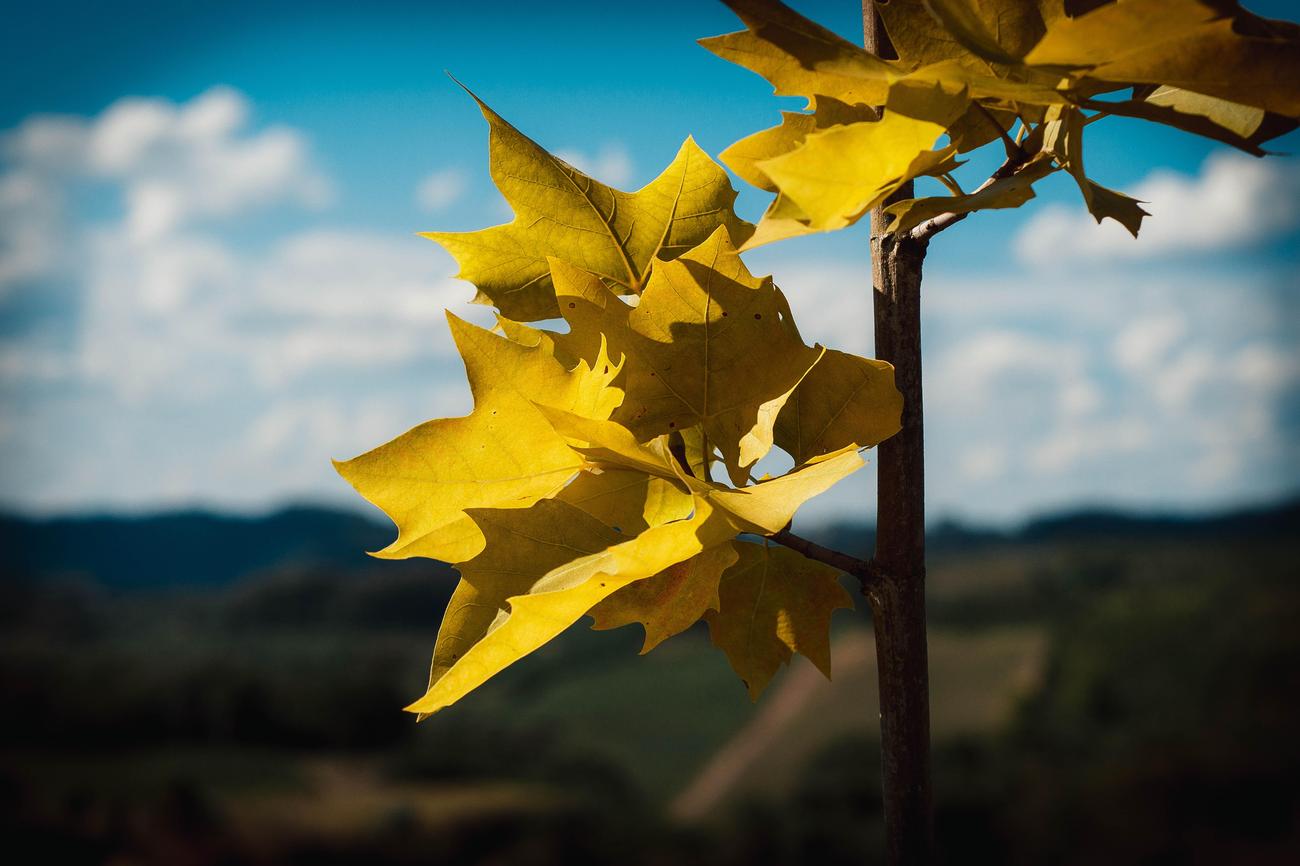Why Maple is Famous: Exploring Its Culinary Significance

As food enthusiasts, we often find ourselves captivated by the allure of certain ingredients that have managed to carve a special place in culinary history. Among these remarkable flavors, maple stands tall and commands attention. So why exactly is maple famous? It’s a question that has intrigued chefs, historians, and food lovers alike. In this article, we embark on a journey to uncover the culinary significance of maple, diving into its rich history, unique characteristics, and widespread popularity. Join us as we explore the multifaceted nature of this extraordinary ingredient and trace its remarkable journey from forest to table.
Why is maple famous?
Maple, with its rich history and culinary significance, has earned its fame in the world of food. From its versatility to its unique flavor, there are several reasons why maple has become such a sought-after ingredient. Let’s explore what makes maple so famous.
Distinctive Flavor and Versatility
Maple syrup, with its sweet and earthy taste, is perhaps the most well-known product derived from maple trees. It adds a delightful richness to breakfast dishes like pancakes and waffles, but its uses extend far beyond that. From glazes for savory dishes to sweetening cocktails and desserts, maple syrup can elevate a wide range of culinary creations. Its versatility makes it a beloved ingredient among chefs and home cooks alike.
“With its distinctive flavor and versatility, maple syrup has become a beloved ingredient in kitchens around the world.”
Cultural Significance and Tradition
Maple holds deep cultural significance, particularly in North America. Native peoples in the region have long used maple sap for its sweetness and as a source of sustenance. The process of tapping trees and collecting sap has been passed down through generations, becoming an integral part of their traditions. In Canada, maple syrup holds such importance that it is even celebrated with festivals and referred to as “liquid gold.” This cultural significance adds to the allure and fame of maple.
“Maple’s role in cultural traditions has helped cement its fame and create a sense of nostalgia around this natural sweetener.”
Health Benefits and Natural Sweetness
Unlike refined sugar, maple syrup is a more natural sweetener that retains some of the nutrients found in sap. It contains minerals like manganese and zinc, as well as antioxidants. While it should still be consumed in moderation, maple syrup offers a healthier alternative to processed sugars. Its distinctive flavor profile and natural sweetness make it an appealing choice for those looking to enhance their dishes in a more nutritious way.
“Choosing maple syrup not only adds a delicious touch to your meals but also provides some health benefits and a taste of nature’s sweetness.”
Global Influence and Culinary Fusion
Maple’s fame has spread far beyond North America, with its influence reaching cuisines around the world. Chefs worldwide have embraced maple syrup as an ingredient that can bring depth and complexity to their dishes. It has found its way into recipes from Europe to Asia, enriching traditional flavors and creating new culinary fusions. This global appreciation for maple further highlights its fame and the impact it has made on the culinary stage.
“Maple’s global influence has created a culinary fusion where traditional flavors meet the sweet richness of this beloved ingredient.”
In conclusion, maple’s fame can be attributed to its distinctive flavor, versatility, cultural significance, health benefits, and global influence. Whether it’s drizzled over pancakes, used as a glaze, or incorporated into innovative dishes, maple syrup continues to captivate our taste buds and earn its place in culinary history.
“From breakfast tables to high-end restaurants, maple syrup’s fame rests on its distinctive flavor, cultural significance, and its ability to enhance dishes with its natural sweetness.”
Maple trees are not just ordinary trees – they hold a wealth of fascinating secrets and fun facts waiting to be discovered! Did you know that maple syrup, a popular sweetener, is derived from the sap of these majestic trees? If you’re curious to learn more about the many intriguing aspects of maple trees, click here for a compilation of mesmerizing fun facts about maple trees. Discover the intricate patterns on their leaves, the vibrant colors they display during autumn, and the unique ecosystems they support. Allow yourself to be captivated by the wonders of nature by clicking on this link to explore the fascinating world of maple trees: fun facts about maple trees.
Why Grade A Maple Syrup Is Worth the Splurge
[youtube v=”rCzx_MTtb_U”]
The Process and Rarity Behind Grade A Maple Syrup
Maple syrup, known for its distinct sweet and earthy flavor, holds a special place in the hearts of many. It’s a versatile ingredient that can be used in a variety of dishes, from drizzling over pancakes and waffles to glazing savory ribs. But have you ever wondered why Grade A maple syrup comes with a hefty price tag? In this article, we delve into the exceptional qualities of Grade A maple syrup and the laborious process that makes it so valuable.
To create the purest form of maple syrup, sap is extracted directly from century-old trees with no added sugar. This process is time-consuming and requires extracting sap drop by drop. It can take hours or even days for the sap to reach its final destination. Once collected, approximately 10 hours are needed to produce just a single gallon of syrup. The sheer effort involved in tapping thousands of trees by hand and carefully monitoring the process contributes to the rarity and cost of Grade A maple syrup.
“Despite its high price, Grade A maple syrup remains in high demand. Its unique flavor profile and versatility make it a sought-after delicacy,” explains maple syrup enthusiast and expert Jeffrey.
The Role of Maple Trees and Seasonal Harvest
Maple trees play a crucial role in maple syrup production. While sugar Maple trees are predominantly tapped due to their high sugar content, other types of maple trees, such as red Maples, are also utilized. To be tapped, a tree needs to reach a minimum age of 40 years and must be healthy and free of any flaws or diseases. Once properly tapped, a maple tree can be harvested for decades without causing harm.
The ideal time to tap these trees is during the spring months, just as the snow begins to melt. During winter, the tree stores starch in its roots, which is then transformed into sugar as temperatures rise. This sugar circulates within the tree, creating the perfect conditions for tapping. Factors like temperature and wind influence sap flow, making the process even more delicate and weather-dependent.
The Journey from Sap to Syrup
After the sap is carefully gathered from the trees, it undergoes a meticulous process that determines its quality. In the United States, maple syrup is graded into three categories: substandard, processing grade, and the highest quality Grade A. Grade A syrup must meet strict criteria, including a consistent color, no sediment, and a solids content of no more than 68.9%.
Through the process of evaporation and filtration, sap is transformed into the rich and flavorful maple syrup we know and love. The sap, which contains 98% water, is boiled in a wood-fired evaporator until it reaches the desired density of 33% water and 67% sugar. Selecting the perfect density is crucial, as over-evaporation can result in a candied texture.
The Cost and Value of Grade A Maple Syrup
Producing Grade A maple syrup is a labor-intensive process that requires constant monitoring and precision. While larger farms may opt for more automated systems, smaller producers like Jeffrey and Ashley rely on traditional wood-fired evaporators, which necessitate meticulous attention to detail. This hands-on approach, combined with factors like the limited availability of Grade A maple syrup, contribute to its higher price compared to commercial imitation syrups.
“Grade A maple syrup is a premium product that offers a strong maple flavor and unparalleled quality. Its unique characteristics make it a versatile and highly sought-after ingredient,” says Ashley, Jeffrey’s wife and partner in their maple syrup venture.
The high demand and limited supply of Grade A maple syrup have led to some remarkable incidents, such as the notorious maple syrup heist in Canada, where millions of gallons of syrup worth over 14 million US dollars were stolen. This incident not only drew attention to the value of maple syrup but also had a significant impact on the global maple syrup supply.
Embracing the Maple Syrup Experience
Despite the popularity of commercial table syrups, there is a growing appreciation for genuine maple syrup, especially premium Grade A varieties. Its unique flavor, versatility, and health benefits make it a preferred choice for many. Maple syrup’s rising popularity has also drawn attention to regions like the Hudson Valley, where local farmers like Jeffrey and Ashley continue a longstanding tradition.
“Maple syrup has a well-rounded flavor profile that enhances both sweet and savory dishes. Its distinct taste and cultural significance make it irreplaceable for many culinary enthusiasts,” remarks Jeffrey.
In conclusion, Grade A maple syrup’s significant price tag reflects not only the labor-intensive process required to produce it but also its exceptional quality and distinct flavor. As maple syrup continues to captivate the taste buds of people around the world, it remains a beloved and sought-after ingredient, bringing a touch of sweetness and heritage to a wide array of dishes.

FAQ
Question: What is maple syrup made from?
Answer: Maple syrup is made from the sap of some maple species.
Question: How is maple wood used?
Answer: Maple wood is widely used in premium furniture, cabinetry, flooring, and the making of kitchen accessories.
Question: Why are maples commonly planted as ornamental trees?
Answer: Maples are commonly planted as ornamental trees due to their fall color, fast growth, and ease of transplanting.
Question: What is the significance of maple in Canadian culture?
Answer: Maple trees are a symbol of strength and endurance in Canadian culture, as they are featured on the country’s coat of arms and flag.
Question: What are some commercial uses of maple?
Answer: Maple provides commercially important lumber, sap for syrup production, and valuable dense hard wood for furniture and other uses.
- Georgia Platform: A Southern Strategy, 1850s - March 31, 2025
- How many weeks is 40 days: Quick Conversion Guide for Accurate Results - March 31, 2025
- How many feet is 300 meters? 984 Feet: Understand Length Conversions Easily - March 31, 2025
















